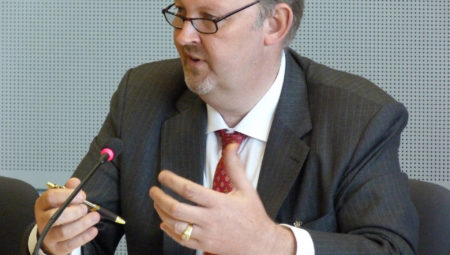Bioforever, short for biobased products from forestry via economically viable European routes, has been launched in september. The reason why this project has become a reality, is clearly market driven, says Anton Robek, responsible for dissemination and exploitation of the project results.
‘In the US, the government has already set a limit to the use of corn ethanol for fuel purposes. Hence the development and construction of several second-generation bio-ethanol plants on this continent are ongoing. Also in Europe, discussions are ongoing about a possible cap on first-generation bio-ethanol and derivatives. Furthermore, the industry in general is more in favor of using non-food feedstocks as it wants to avoid prickly discussions about food versus fuel or food versus materials. It doesn’t matter whether the arguments against foodcrops for fuels, materials or chemicals are justified or not, it is the way the industry goes.’
Three types of feedstocks
So if the Coca-Cola’s, Danone’s or Lego’s of this world are interested in biobased chemicals/plastics, the building blocks ideally should be derived from non-edible biomass, for example lignocellulosic feedstocks. According to Robek, the Bioforever-consortium will focus on woody biomass but will take three types of lignocellulosic biomass in consideration: traditional woodchips/pellets, crop residues and energy crops. ‘The best chances for now I see for waste wood, crops residues and energy crops, such as ‘energy cane’ or fast growing poplar, mainly because its availability and its price per ton. Traditional wood chips/pellets are momentarily too expensive, partly due to energy subsidies. Let me put it like this: if the price per ton dry matter would be 70 euro, it would make a business case. However, current prices of wood chips hover around the 100 euro-mark. In terms of quality however (heterogeneity etc., red.), this feedstock would be ideal as pretreatment steps are in general easier compared to fluffy” crop residues.’
Vital steps
Robek stresses that biomass selection and pretreatment are the most vital steps in the entire process from biomass to intermediates. If the quality and/or homogeneity of the input are compromised, the output is likely to be of a lesser quality. This could work out for some products, but for example for specialty chemicals and several plastics the quality of the underlying building blocks should be second to none. If not, subsequent purifying steps would add to the total processing costs. Under the Bioforever-umbrella, four pretreatment methods will be explored and/or scaled up: a combination of acid and steam explosion demonstrated in the BPF in Delft, highly concentrated hydrochloric acid (Avantium’s Zambezi-process), the proprietary BALI-process (using sulphites, ed.) from Borregaard and AVAP (based on organosolve, ed.), also a proprietary process from API. The first two processes are in a pilot/demo stage, the latter two are already in a more advanced stage. According to Robek, it is not necessarily a race with one winner between the above technologies. ‘It depends on the performance of the end product or intermediate, which depends in turn on the end product. For example, Avantium – partner in Bioforever – is interested in deriving FDCA from lignocellulosic feedstocks. For this application, the purity of the C5 and C6-sugars is very important for the conversion towards furanics. Needless to say, cost structures and the robustness of the technologies come into play.’
Five value chains
As mentioned before, the Bioforever-consortium will explore five different value chains, based upon varying feedstock-process-combinations: bio-ethanol (fuel, building block), butanol, FDCA, lignin derivatives and C5/C6-sugars for fermentation purposes. Harry Spuyman (DSM), the overall coordinator of Bioforever, explains that at the end of the Bioforever-project, in 2019, there will be a blue print of several blue prints for an industrial-scale plant. In terms of volume, such a facility would mainly produce C5/C6-sugars and lignin. Therefore, the cost-competiveness of these streams should be warranted to make this a viable business case. Based upon current parameters, also lignin should be valorized higher than purely into heat (by co-combustion). ‘During the project, most parameters will undoubtedly shift’, Robek says. ‘We are aiming for a facility with a biomass intake between 1 and 3 million tons of dry matter per year. This band width is similar to existing factories in the paper and pulp sector, that have a long history in processing biomass.’
Business potential
This kind of facility could see the light of day in 2022/2023 at the earliest. In terms of CAPEX, a large scale facility (processing 3 million tons biomass) would cost approximately 750 million euro, Robek says. If this facility would not be able to tap into existing infrastructure for its electricity and heat, costs would go up to 1 billion. ‘We also are going to look into various financing options for such a facility, be it in a later stage. There are numerous configurations possible. More important is the interest from around the world in industrial-scale conversion of lignocellulosic biomass, partly because of environmental policies, partly because of the business potential.’
DSM
DSM is one of the 14 private partners in Bioforever. The Dutch life and material sciences company is active in various domains relevant to the biobased economy, such as the development of enzymes and biobased materials. Harry Spuyman: ‘DSM is interested in the entire value chain: from biomass selection to end product. As a producer of enzymes, enzymatic hydrolysis has our special attention, this speaks for itself. Within the scope of Bioforever, it would be interesting to see whether the aforementioned process can be fine tuned to correct for irregularities in certain feedstocks. For the time being, it is too premature to go into details. We’ve only just started.’
Bioforever
Bioforever will run under the umbrella of the Bio Based Industries Joint Undertaking (BBI JU) which is a public private partnership between the European Union and the Biobased Industry Consortium. The project consortium consists of 14 European companies. The project will run 3 years from September 2016 – September 2019 with a total investment of 16 million euro.



